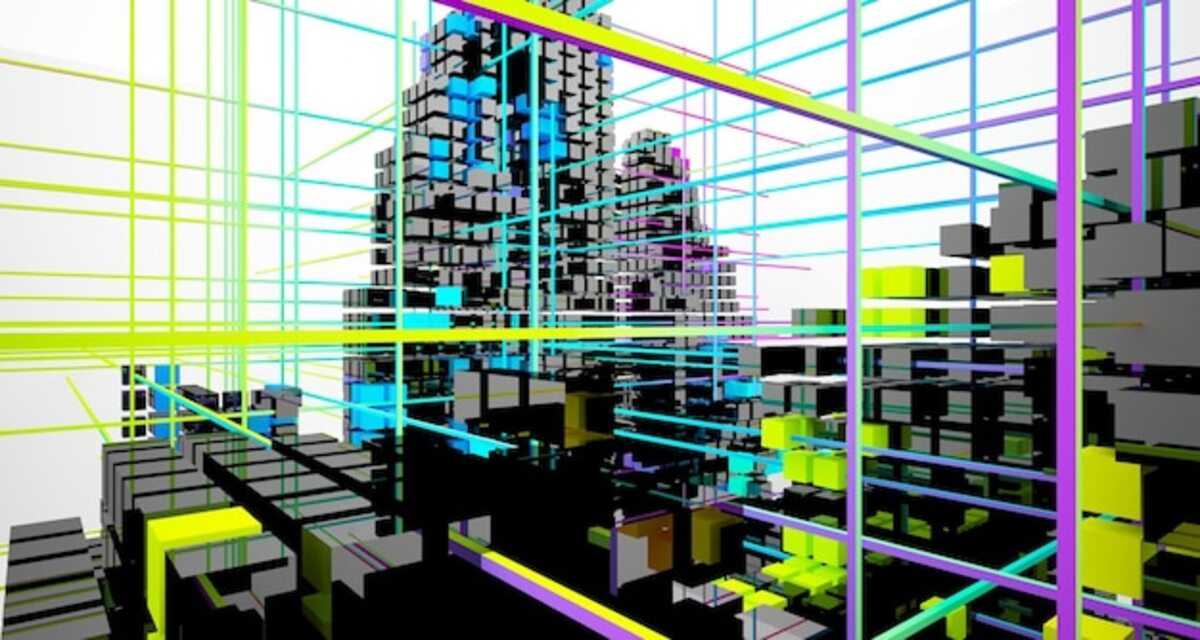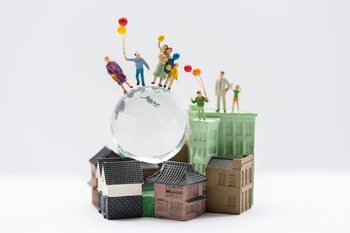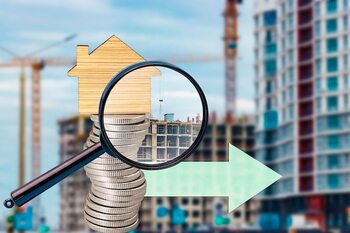Connectivity and Urban Design: Keys to Real Estate Appreciation

Connectivity and urban design are two fundamental pillars that can transform the value of a property. In a world where mobility and accessibility are increasingly valued, understanding how these factors influence real estate appreciation is crucial for any investor or owner. This article will break down the keys that link these concepts, providing a clear view of how to maximize the potential of your investment in the real estate market.
The importance of road infrastructure in added value
Road infrastructure plays a crucial role in the value of a property, as it defines the accessibility and connectivity of an area. A well-designed and maintained road system not only facilitates daily transit but also promotes commercial and residential development. Properties located near main avenues, highways, or public transport tend to have a higher value due to their easy access to essential services such as schools, hospitals, and shopping centers. Thus, the quality of the roads directly influences the demand in the real estate market, driving up prices and attracting potential buyers and investors.
Moreover, urban planning that prioritizes road infrastructure also fosters a more attractive environment for living and working. When streets are safe, well-lit, and have adequate pedestrian areas, a sense of community is created that stimulates interest in residing in that area. This effect is multiplicative; well-connected areas not only retain their value over time but can also experience a significant increase in their appreciation as new developments and investments come to the area. Therefore, understanding how road infrastructure impacts urban design is essential for those looking to maximize their real estate investments.
2. Public spaces: the heart of urban design
Public spaces are undoubtedly the heart of urban design. These places not only serve as meeting points for the community but also foster social interaction and the well-being of residents. A well-designed park, a vibrant square, or an attractive pedestrian walkway can be key catalysts for revitalizing a neighborhood and attracting both residents and visitors. The quality and accessibility of these spaces directly influence the perception of the neighborhood, which can significantly elevate the value of surrounding properties. When investing in creating pleasant and functional environments, one is betting on greater real estate appreciation.
Additionally, well-integrated public spaces within the urban fabric promote an active and healthy lifestyle. Proximity to green areas and recreational zones not only improves the quality of life for residents but also increases the area's appeal for future investments. Studies have shown that properties located near parks and plazas tend to maintain their value and even appreciate more quickly compared to those situated in less friendly environments. Therefore, when considering urban design from a holistic perspective that prioritizes public spaces, a virtuous cycle is fostered where connectivity and comfort translate into tangible added value for all involved.
3. Efficient public transportation: a magnet for shoppers
Efficient public transportation has become an essential attraction for property buyers, especially in densely populated urban areas. The ease with which residents can access transportation options such as buses, trains, and trams not only enhances their quality of life but also reduces the need to rely on a private vehicle. This not only saves time and money but also contributes to less traffic congestion and a more sustainable environment. As a result, properties located near public transportation stations or stops tend to experience higher demand, which in turn can significantly boost their appreciation.
In addition to the increase in real estate demand, access to a well-designed public transportation system provides a sense of community and connection among residents. Areas with efficient routes tend to attract a diverse demographic, which adds cultural and social value to the neighborhood. This interconnection facilitates local economic development, as businesses thrive with a greater influx of potential customers who can easily travel. In this context, investing in properties near public transportation nodes not only represents a smart financial decision but also contributes to the sustainable and cohesive growth of the urban environment.
4. Sustainable urbanism projects and their impact on value
Sustainable urbanism projects are a growing trend in the development of smart and connected cities. These initiatives aim not only to improve the quality of life for residents but also to foster a healthier and more energy-efficient environment. The implementation of green spaces, the promotion of public transportation, and the creation of accessible communities are elements that contribute to a comprehensive urban design. When carried out properly, these projects can significantly increase the appeal and value of surrounding properties, as current buyers increasingly seek environments that promote sustainability and well-being.
Moreover, the integration of sustainable solutions in urban planning not only benefits immediate residents but can also have a positive impact on the entire community. Pedestrian zones, recreational areas, and efficient water or energy management systems can elevate the perception of the area as a desirable place to live and invest. This translates into increased demand from potential buyers and tenants, which is essential for enhancing real estate value. In this way, by incorporating projects that prioritize the environment and urban quality, an attractive economic return is ensured, as well as a lasting improvement in the social and economic dynamics of the neighborhood.
5. Digital connectivity: a new standard for modern properties
Digital connectivity has emerged as an essential component in the evaluation of modern properties. As technologies advance, high-speed internet access and the integration of smart devices are increasingly demanded by buyers. Properties with a robust digital infrastructure not only offer convenience but also become attractive to professionals seeking a conducive environment for remote work. This shift in expectations has led developers and investors to prioritize connectivity as a key factor in their projects, ensuring that these spaces meet the needs of the new urban lifestyle.
Moreover, digital connectivity is not limited solely to internet access; it also includes the integration of home automation systems and smart home solutions. These innovations allow homeowners to manage different aspects of their home from their mobile devices, which adds significant value to the property. The ability to control everything from lighting to security through intuitive applications not only enhances the user experience but also elevates the property's appeal in the market. By considering these digital features as an integral part of urban design, investors can maximize their return on investment and contribute to a more interconnected and efficient community.
6. The role of nearby services in real estate valuation
The value of a property is not only determined by its physical characteristics but also by the surrounding environment. Nearby services, such as schools, hospitals, supermarkets, and parks, play a crucial role in real estate valuation. Proximity to these services not only improves the quality of life for residents but also increases the demand for properties in that area. A neighborhood well-equipped with basic infrastructure is more attractive to potential buyers or renters, which translates into a significant increase in its appreciation. Moreover, access to efficient public services and recreational options can influence purchasing decisions. Families often prioritize proximity to good schools and healthcare centers, while young professionals may seek areas with an active nightlife and accessible public transportation options. This preference for areas with high connectivity and adequate services fosters balanced and sustainable urban development, thereby elevating the property's value in the long term. In summary, investing in areas with a good supply of services not only ensures immediate well-being for residents but also secures greater profitability in the future of the real estate market.
7. Global trends in urban connectivity and their local application
Urban connectivity has evolved towards a more comprehensive approach, where technology and design merge to create spaces that are not only functional but also sustainable and pleasant for their inhabitants. Global trends in this area include the use of multimodal transport networks, which allow citizens to move seamlessly between different modes of transport: bicycles, buses, trains, and shared vehicles. This interconnection promotes a more active and sustainable lifestyle, which in turn can increase demand for properties located in well-connected areas. In this regard, real estate developers have the opportunity to design projects that prioritize these connections, thereby ensuring greater added value.
Locally, applying these trends involves adapting global solutions to the specific realities of each community. This may include creating green corridors that integrate public spaces with sustainable transportation routes or developing mobile applications that facilitate urban navigation and access to essential services. By doing so, not only are living conditions in these areas improved, but the appeal for new residents and investors is also increased. The key is to recognize how innovations in connectivity can be implemented locally to maximize real estate value and promote harmonious and accessible urban development.
8. Strategies to enhance property value through urban design
Strategies to enhance property value through urban design are diverse and focus on creating spaces that are not only aesthetically pleasing but also functional and accessible. One of the most effective tactics is the implementation of green areas and well-designed public spaces that promote social interaction and the well-being of residents. Parks, plazas, and pedestrian pathways not only beautify the environment but also increase the quality of life, making them attractive to both residents and potential buyers. The integration of these elements can significantly elevate the value of surrounding properties.
Additionally, prioritizing urban planning that promotes connectivity is essential to maximize value. This includes creating efficient transportation networks, as well as proximity to basic services such as schools, hospitals, and shops. An urban design that facilitates access to these amenities not only makes an area more desirable but also ensures a constant flow of interest in the vicinity. Implementing innovative solutions such as bike lanes or sustainable public transport systems can radically transform a neighborhood, elevating its profile in the real estate market and ensuring a higher return on investment in the long term.



